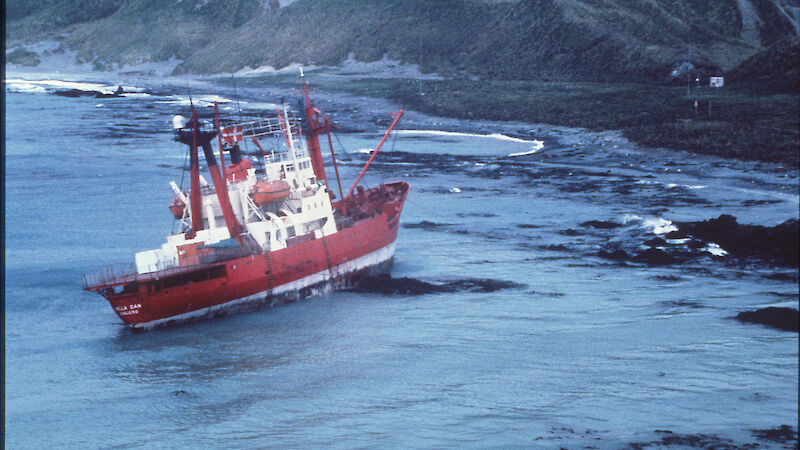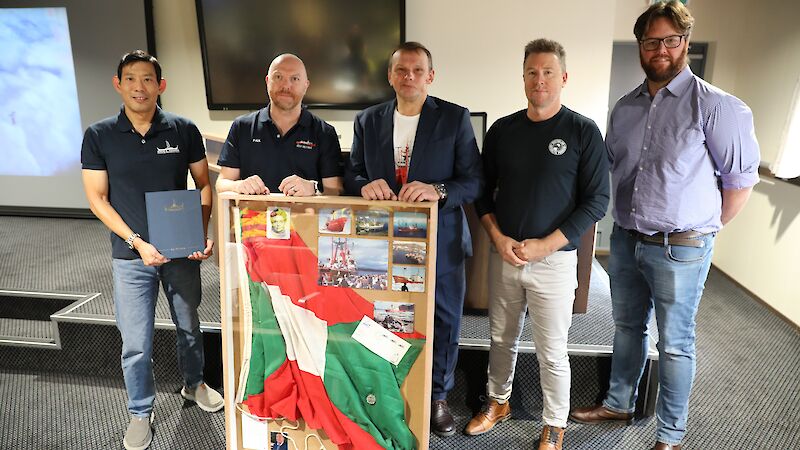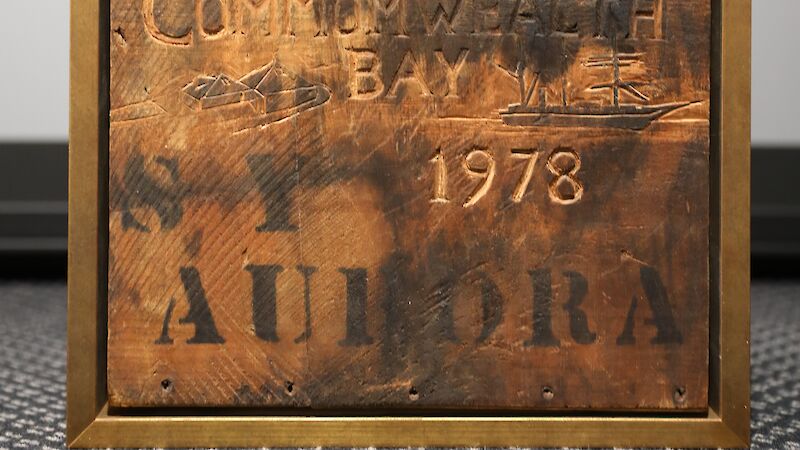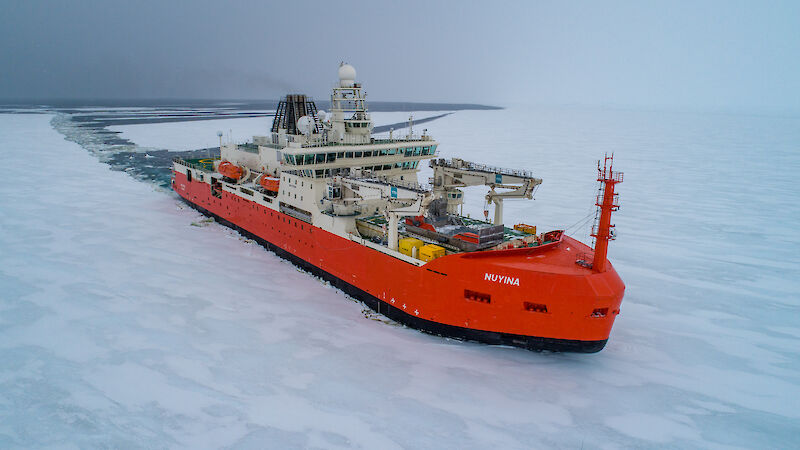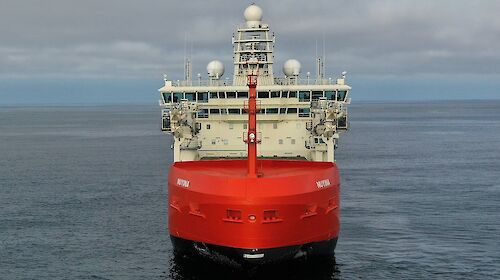“We had a swell towards the shore and it was high tide, and all of a sudden the anchor was slipping,” Mr Nygaard said.
“We were very close to the shore because of the bunker hose and within two minutes we were on the beach.”
Macquarie Island personnel used LARCs – lighter, amphibious, resupply, cargo vehicles – which can travel on land and in water, to rescue everyone on board.
“They did a tremendous job coming around the vessel in heavy seas and getting people down the rope ladders,” Mr Nygaard recalls.
“The rope ladders were clapping against the side of the ship and when the swell hit the port side, causing pressure in the diesel tanks, we got a lot of vaporised diesel on the deck and that made everything very slippery.
“Trying to run around in the life suits was almost impossible but we got everyone off.“
Nella Dan was refloated several weeks later but caught fire and was scuttled in deep water.

